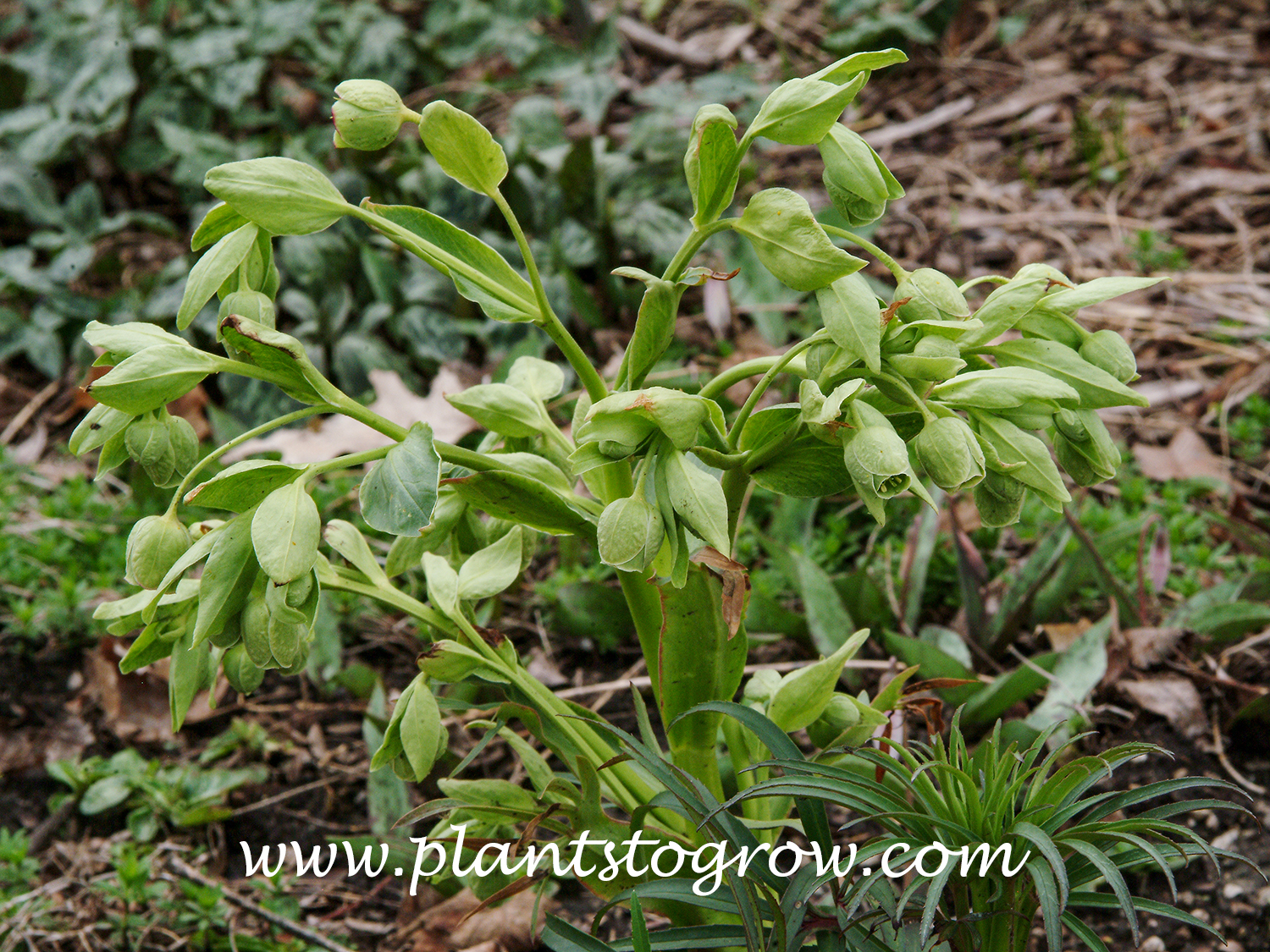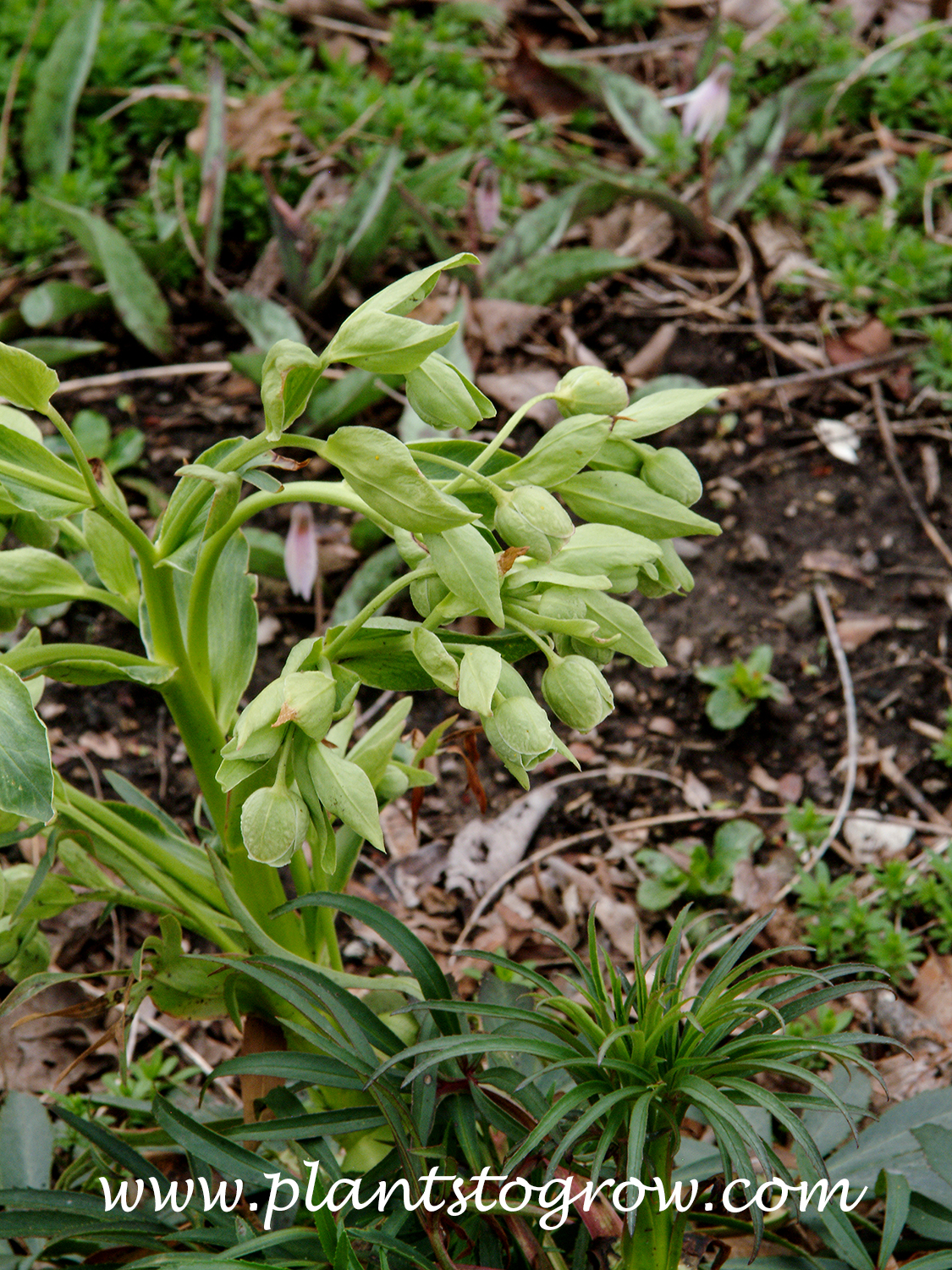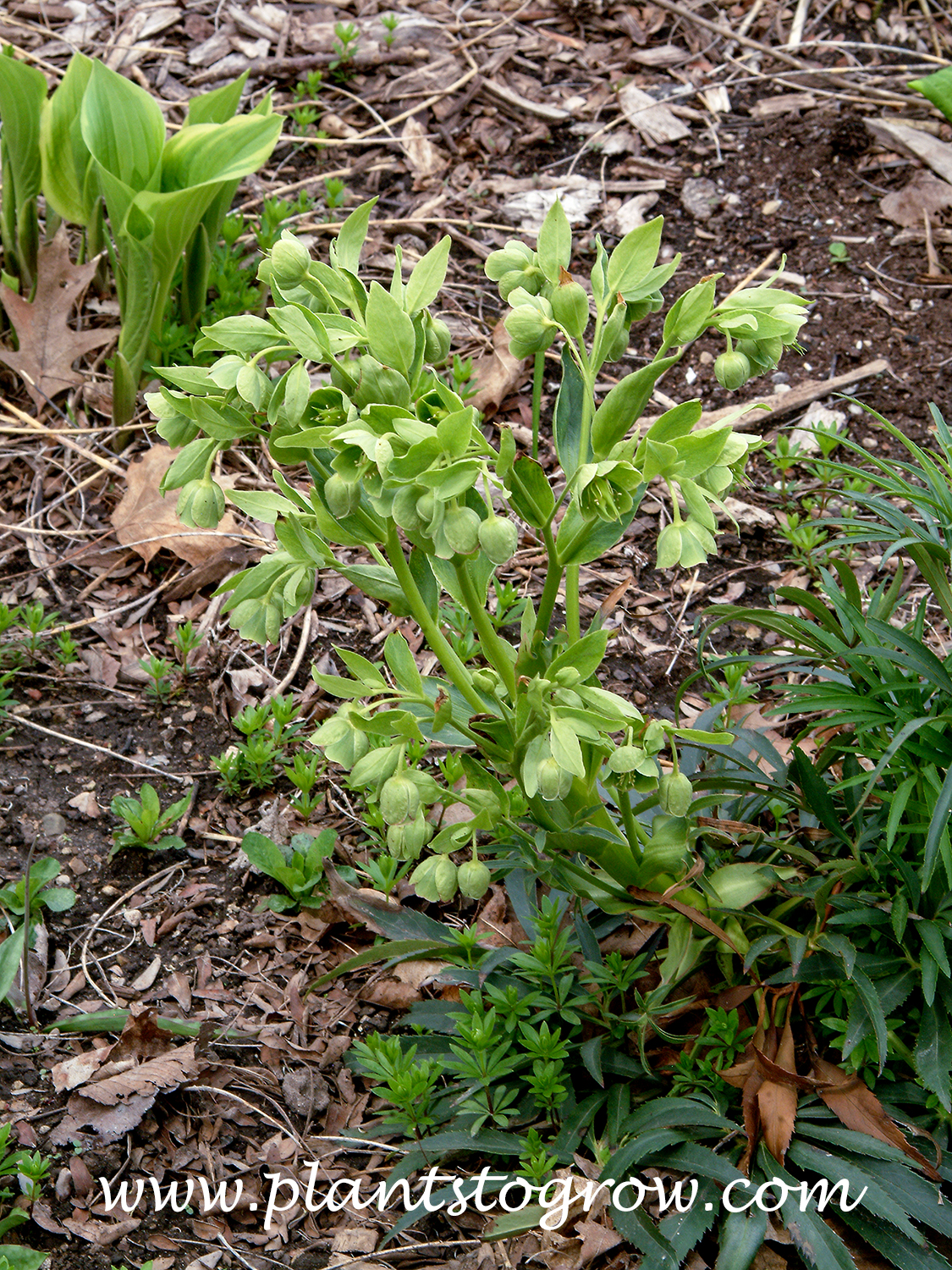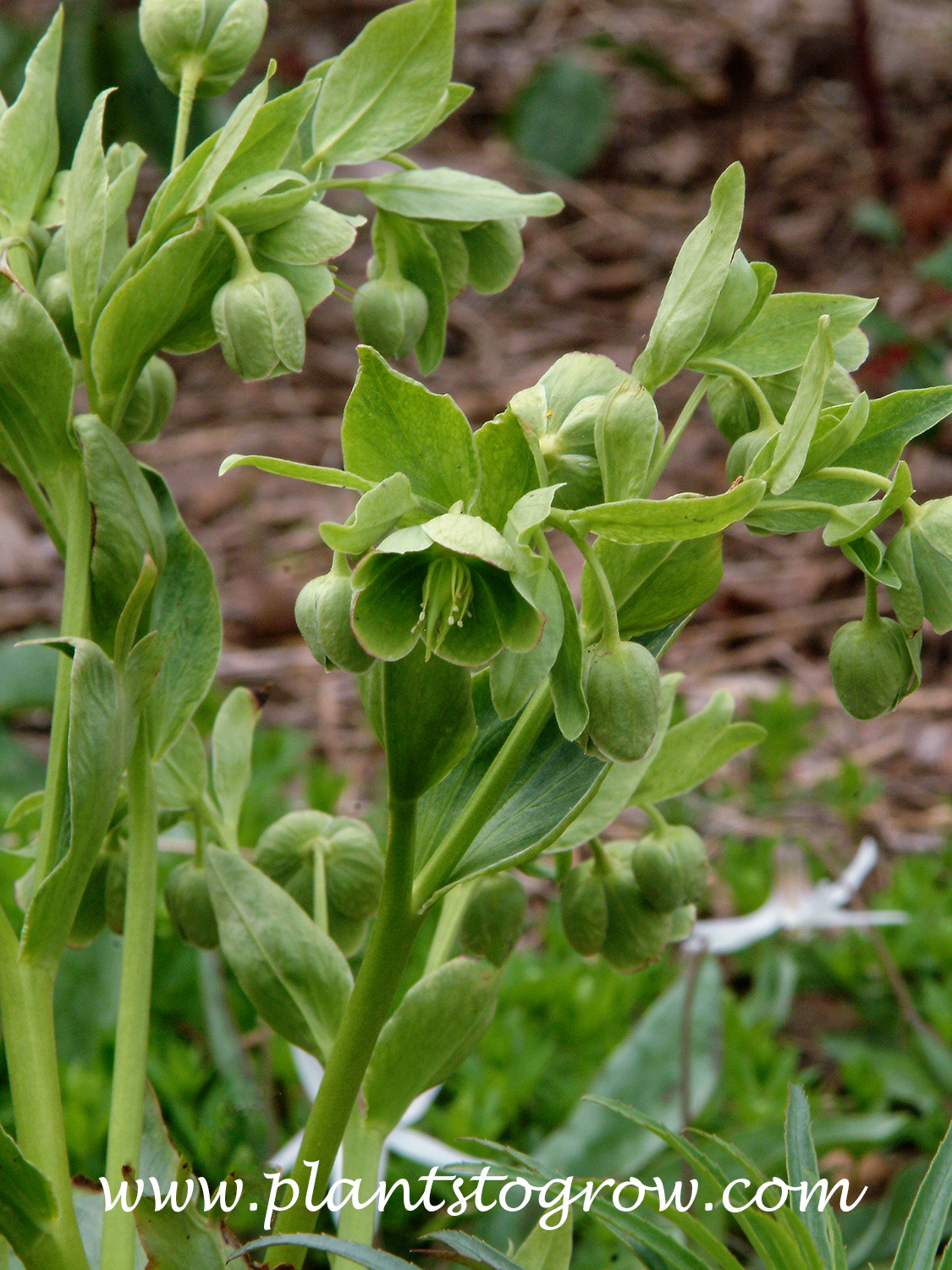| Description | Stinking Hellebore (Helleborus foetidus) features green foliage and yellow-green flowers. Its flowers or bruised leaves can emit a disagreeable odor. |
|---|---|
| Pronunciation | (hel-eh-BORE-us) |
| Plant Type | Perennials Hardy |
| Hardiness Zone | (5)6-9 |
| Sunlight | part shade, shade |
| Moisture | moist, average |
| Soil & Site | moist, average |
| Flowers | Flowers are yellow-green pendant, cup-shaped blossoms surrounded by pale green bracts. They are found in clusters of cymes. |
| Fruit | Clustered, green, fleshy capsules, long-beaked, surrounded by persistent sepals. |
| Leaves | Leaves are palmately divided into many leaflets. |
| Dimensions | 1-2 by 1-1.5 feet (HS) |
| Maintenance | Cutting back hard after flowering will induce a new flush of growth. |
| Propagation | It takes about 2 years from seed to flower. |
| Native Site | Mountainous regions of Europe, Greece, and Asia MinorIt was found in India in 1839. |
| Misc Facts | Flowers and bruised foliage are unpleasantly aromatic (foeditus meaning fetid). Helleborus is Greek, from hellein, meaning “to kill,” and bora, meaning “food,” referring to the plant’s poisonous qualities if placed in food. |
| Notes & Reference | #144-Missouri Botanical Gardens website (www.missouribotanicalgarden.org), #270-North Carolina Extention Gardener Tool Box (https://plants.ces.ncsu.edu/plants) |

Cart




